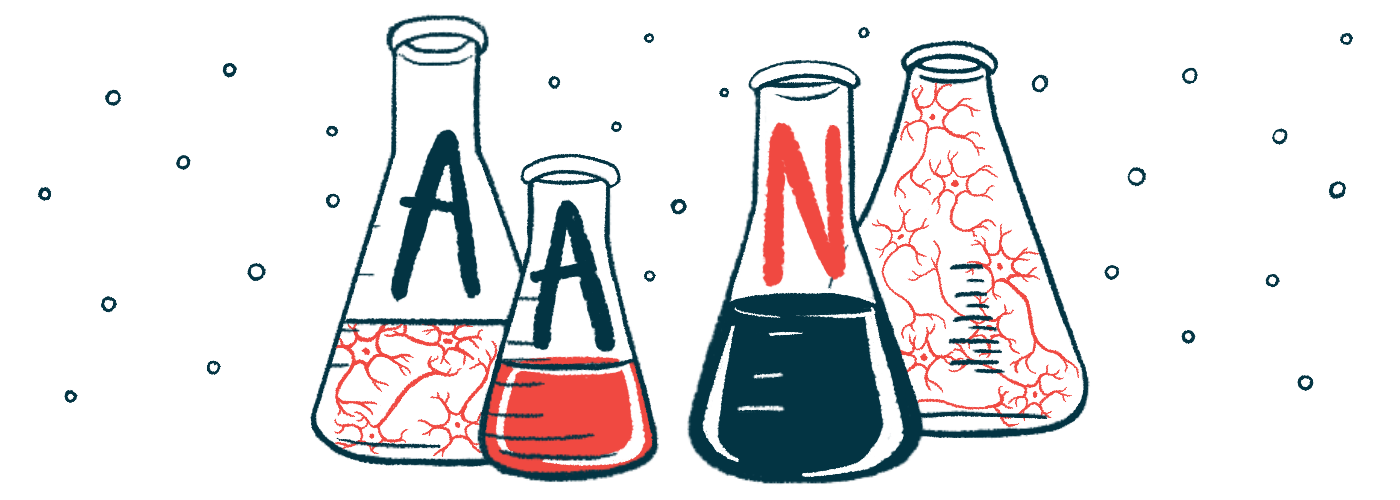AAN 2023: Apomorphine infusion pump SPN-830 reduces ‘off’ time
Participants in Phase 3 INFUS-ON trial also reported health gains

Most people with Parkinson’s disease treated with SPN-830, an apomorphine infusion pump, report improvement in their health status. SPN-830 also reduced “off” time, when symptoms are not being adequately controlled, by an average of about three hours a day.
That’s according to new results from an open-label clinical trial. Stuart Isaacson, MD, a neurologist at the Parkinson’s Disease and Movement Disorder Center of Boca Raton in Florida, discussed the findings at this year’s American Academy of Neurology (AAN) annual meeting in a presentation titled, “Continuous, Subcutaneous Apomorphine Infusion for Persistent Motor Fluctuations in Parkinson’s Disease: Full results of the AP2-3000 open-label study.”
Parkinson’s is caused by the death and dysfunction of cells in the brain responsible for making the signaling molecule dopamine. Standard treatment includes levodopa and its derivatives, which give these cells more material to make dopamine.
While levodopa can manage symptoms, many patients have off episodes with long-term treatment where symptoms are not adequately controlled between doses. Dyskinesia, or uncontrolled movements, can also occur over time.
Apomorphine (sold as Apokyn, among others) mimics dopamine’s activity in the brain. It’s approved in the U.S. for managing off episodes and the approved version of it is administered subcutaneously (under the skin).
SPN-830 delivers the therapy in a continuous infusion, making it more convenient and with fewer injection sites. It’s approved in much of Europe, Asia, and Australia.
Supernus Pharmaceuticals is seeking SPN-830’s approval with the U.S. Food and Drug Administration (FDA), but a review of its application was delayed last year after the agency asked for more information and facility inspection issues related to the COVID-19 pandemic were raised.
Results of SPN-830 in INFUS-ON
At AAN, Isaacson shared the full results from an open-label Phase 3 trial known as AP2-3000 or INFUS-ON (NCT02339064). The trial was sponsored by US WorldMeds, which had developed SPN-830 before Supernus acquired the rights to it in 2020. An earlier Phase 3 trial called TOLEDO (NCT02006121), which tested SPN-830 against a placebo, was conducted in Europe. The open-label INFUS-ON study was the first to use SPN-830 in the U.S., Isaacson said.
The study enrolled adults with advanced Parkinson’s who were having at least three hours of off time a day, despite optimized treatment that included levodopa and at least one other Parkinson’s therapy.
Participants initially entered a titration period, where the SPN-830 dosage was adjusted to optimize controlling symptoms with minimal side effects. This typically took about a month. Once the optimized dose was identified, participants entered a maintenance period for about a year. The average dose of apomorphine during the maintenance phase was 45.2 mg a day, with most patients receiving an infusion rate between 3 and 5 mg per hour.
A total of 99 Parkinson’s patients enrolled in the study. About two-thirds were male, more than 90% were white, and the average disease duration was about 10 years. At the start of the study, the patients were having more than six hours of off time a day on average. They “spent roughly half their day with good on time, and the rest of the day not so good,” Isaacson said.
Eighty-five patients completed the titration portion and entered the maintenance phase. Of these, 69 completed 12 weeks (three months) in the maintenance phase, and 48 completed the full maintenance phase. Those who completed the year entered a long-term extension phase that’s ongoing, “with some patients in it still being treated after four or five years,” Isaacson said.
The most common side effects associated with SPN-830 included nodules or redness at the infusion site, nausea, dyskinesia, and sleepiness. These generally were more common during the titration part and were reported less often once participants were on an optimized long-term dose.
The most common reason for stopping participating was side effects related to SPN-830, especially reactions at the infusion site. In total, 17% in the titration phase and 19% of patients at the maintenance phase discontinued due to side effects. While infusion site reactions occurred in nearly four of every five patients, none were judged to be severe.
“Skin reactions, though common, were not limiting for most patients,” Isaacson said.
Reductions in daily ‘off’ time
Results showed that, by 12 weeks in the maintenance phase, daily off time had decreased by about three hours on average. Consistently, daily “good on” time, when symptoms are controlled without troublesome dyskinesia — increased by about three hours a day on average. By week 12, 62.1% saw a reduction in off time of at least two hours a day.
In line with better symptom control, the average daily dosage of levodopa decreased substantially during the study.
Around 90% of patients reported their overall health status had improved since starting SPN-830 and just over two-thirds (65%) said they were “much improved” or “very much improved” at week 12.
Findings from the end of the yearlong study generally were consistent with the 12-week data. Overall, data were “very similar” to the TOLEDO study in Europe, Isaacson said, adding data from the two studies “hopefully will lead to this therapy finally becoming available in the [U.S.].”
Note: The Parkinson’s News Today team is providing coverage of the American Academy of Neurology (AAN) 2023 Annual Meeting April 22-27. Go here to see the latest stories from the conference.







